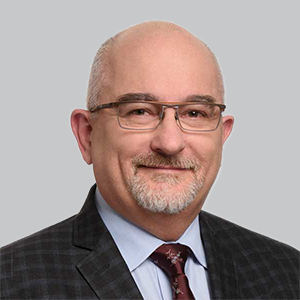AXO-AAV-GM2 Administered to First Patient in GM2 Gangliosidosis Trial
The 2-stage study is an open-label, 2-stage clinical trial designed to evaluate safety and dose-escalation (stage 1) and safety and efficacy (stage 2) of surgically delivered AXO-AAV-GM2.
Gavin Corcoran, MD

Sio Gene Therapies recently announced that the first infant patient with GM2 gangliosidosis (GM2-G) has been dosed in its phase 1/2 trial (NCT04669535) assessing an investigational agent, AXO-AAV-GM2, in the treatment of the disease, also known as Tay-Sachs disease or Sandhoff disease.1
This news marks a busy few months for the Sio pipeline, coming after a December announcement of positive 6-month follow-up data from the low-dose (1.5x1013 vg/kg) cohort of phase 1/2 trial of its therapy AXO-AAV-GM1 for GM1 gangliosidosis (GM1-G; NCT03952637),2 and another noting that the first patient had been dosed in the high-dose (4.5x1013 vg/kg) cohort of the clinical trial.3
“We are proud to bring the first potentially disease-modifying treatment for GM2 gangliosidosis to the clinic, which is a milestone for Sio, for patients, and for the field of gene therapy,” said Gavin Corcoran, MD, Chief R&D Officer, Sio, in a statement.1 “By restoring lysosomal enzyme activity where it is essential, AXO-AAV-GM2 has the potential to change the course of this disease and help affected children attain and retain important neurodevelopmental milestones. The prior expanded access study of AXO-AAV-GM2 provided important proof-of-concept data and we look forward to the results of the first stage of our study as we strive to develop a treatment for children suffering from this rapidly progressive and fatal disease.”
This phase 1/2 study in GM2-G is an open-label, 2-stage clinical trial designed to evaluate safety and dose-escalation (stage 1) and safety and efficacy (stage 2) of surgically delivered AXO-AAV-GM2 into the brain and spinal cord of patients with both infantile and juvenile GM2 gangliosidosis. The treatment aims to restore HexA function by introducing a functional copy of the HEXA (defects in which lead to Tay-Sachs disease) and HEXB (defects in which lead to Sandhoff disease) genes via delivery of 2 co-administered AAVrh8 vectors.
The agent has been previously granted an orphan drug and a rare pediatric disease designation by the FDA and is the first GM2-G investigational gene therapy to enter clinical trials.
WATCH NOW: The Economic Burden of SMA Prior to Treatment Approvals: Lisa Belter, MPH
“To date, the current GM2 treatment landscape is limited to supportive care, underscoring the significant need for new treatment options to address this devastating pediatric neurodegenerative disease,” principal investigator Florian Eichler, MD, director, Leukodystrophy Service of the Center for Rare Neurological Diseases, Massachusetts General Hospital, said in a statement.1 “AXO-AAV-GM2 has significant potential to address the clinical manifestations of both Tay Sachs and Sandhoff diseases, and as a result, the dosing of this patient represents a major step forward for this therapy. We look forward to evaluating the results of this study and advancing the first potentially disease-modifying treatment option for patients with GM2.”
Data in GM2-G published in 2019 from 2 patients under an expanded access investigational new drug application found that treatment with AXO-AAV-GM2 was generally well-tolerated and associated with improved bioactivity outcomes.
In GM1-G, data from the December announcement suggested an acceptable safety profile in 5 patients treated with AXO-AAV-GM1. Serum beta-galactosidase (β-gal) enzyme activity increased in all patients at all time points between day 7 and month 6, representing an approximate doubling in enzyme activity after gene transfer. At month 6, enzyme activity was restored to a mean of 38% (range, 23-57) of normal reference levels. All 5 children demonstrated signs of clinical disease stability as assessed by Vineland-3 Growth Scale Value (VABS-3), Upright and Floor Mobility (UM and FM), and Clinical Global Impression (CGI) scales.2
Sio Gene Therapies currently has a partnership with Viralgen, an AskBio subsidiary, to support AAV-based vector manufacturing of material for the trial for the registrational study of this program. As well, it has an existing genetic testing collaboration with Invitae, a partnership with GM2 gangliosidosis patient groups, and collaboration with researchers at the University of Massachusetts Medical School and Massachusetts General Hospital. The company noted it has begun patient identification and screening activities for the ongoing clinical study.
“The families of children with Sandhoff and Tay-Sachs diseases show incredible bravery in choosing to participate in investigational studies of novel therapeutics like AXO-AAV-GM2. We share their hope that this treatment can halt or reverse the otherwise inexorable course of these tragic diseases,” said principal investigator Terence R. Flotte, MD, professor of pediatrics, and dean, University of Massachusetts Medical School, in a statement.1